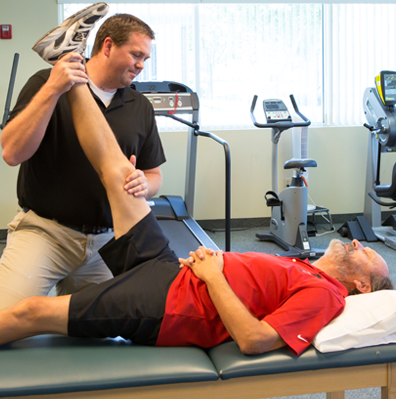“How Do I Stretch?”
by Daniel Cox, DPT
AZOPT Glendale Doctor of Physical Therapy
This is a question we often get from our patients, and the simple answer is: It depends on your goals.
There can be a lot of uncertainty about the most effective way to do it, and why it’s even beneficial to stretch. There are two main categories to stretching- static (gentle prolonged hold) and dynamic (gentle smooth movement). They both have different aims.
Static stretching is primarily used for relaxation and increased flexibility. The goal is to maintain muscle and tissue health and function. This is particularly effective for muscles that are tight, sore or just need to be longer for proper function such as sufficient joint motion. When a muscle is used often and worked hard, it becomes tight and swollen. This restricts blood flow, which can lead to increased soreness. Gentle, prolonged stretching is a great way to decrease some of these effects and keep muscles healthy for the future.
One common mistake is to stretch too hard. More isn’t always better. Stretching too hard can strain and damage a tired muscle and lead to more harm than good. A good guideline is to create a little tension in the muscle, but only as much as is tolerable for 20-30 seconds without wishing it was over. This stretching should feel GOOD! If it doesn’t feel good, don’t be afraid to ease up. It’s all up to you! Stretches work best when completed two or three times in a row. For a normal muscle, it’s probably enough to stretch after exercise. For a muscle that lacks flexibility to reach or move, repeating the stretch a few times per day is best.
Before golfing, tennis, hiking, or something else, dynamic stretching is the best way to get your muscles ready for exercise! These stretches are often confused for ‘bouncing’ into and out of a static stretch, which is not very good for muscles. A gentle, dynamic stretch does not stress muscles to their end-stretch. Instead, it increases blood flow and temperature of the muscle to help it fire the best. For example, lunges can be used to warm up prior to walking, hiking, or tennis. Slow arm circles that gradually increase from small circles to larger circles would be great prior to softball, tennis, or lifting weights. The idea is to allow more blood flow to the muscles and increase your heartrate a little faster than resting.
Dynamic stretch before exercise to ready your muscles for work. Gentle, static stretching after exercise or throughout your day to keep your muscles healthy. These two guidelines will relieve a lot of confusion and assist you in performing your best and doing what you love – pain free!
To check out some static and dynamic stretches, check out our Stretches of the Week by clicking here!
If you feel pain or limitations when you are stretching or exercising, or have questions, consult an AZOPT Doctor of Physical Therapy, either through an evaluation or one of our free screenings!







